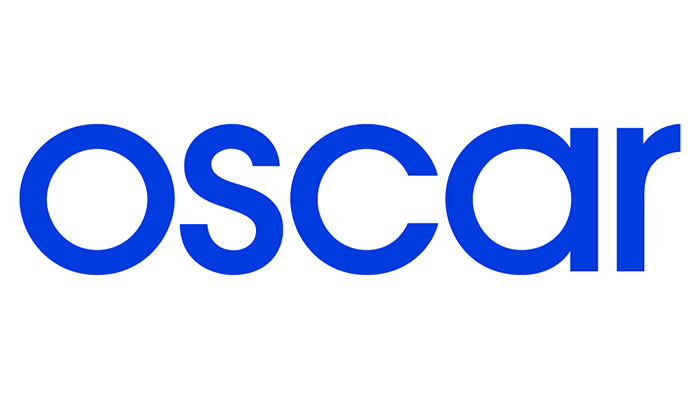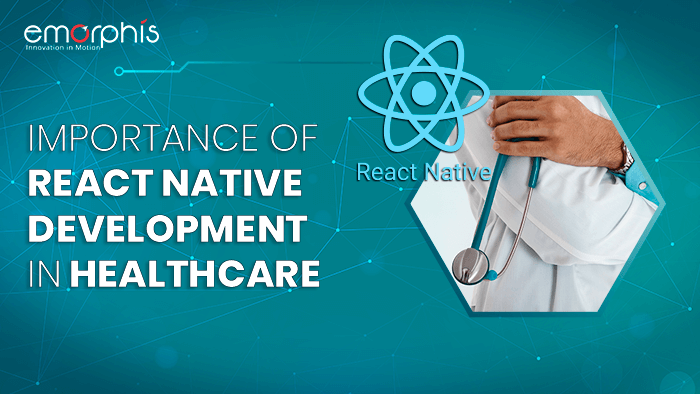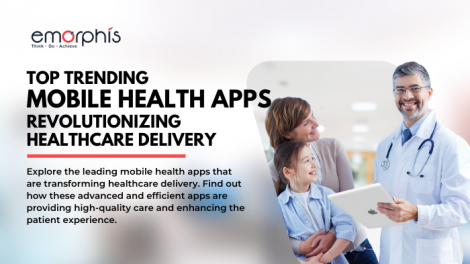In present times, the new generation likes to solve every issue through smartphone applications. However, the only exception is the healthcare sector. Notwithstanding, the rise of concerns regarding chronic health and increased usage of wearable has made health tech businesses to take notice of healthcare software solutions. Thankfully, React Native Development technology is rising in the ranks among numerous mobile app development machinery. Besides, healthcare companies are not far behind in utilizing its benefits of it.
Now, two questions arise in the mind of healthcare enthusiasts:
- Why focus on mobile healthcare apps?
- Why only React Native framework and not others?
For the first question, the answer is given below: There will be a tremendous increase in the mobile healthcare industry from $13.9 billion in 2020 to $38 billion by the year 2025.
The given fact shows that the mobile apps shall be in great demand in the future. But have you ever wondered on which platform healthcare apps should be designed?
To the surprise of the tech lovers, React Native is the current framework that fulfils the following criteria. Moreover, its exclusive features make it favourable among healthcare app developers also.
In addition, the given figure demonstrates that React Native has been the dominant framework to design mobile apps. So, why not healthcare app developers should lags behind in adopting such technology?
Hence, the given article will define the importance of React Native development in healthcare. Likewise, further emphasis will be on how healthcare apps will rule the roost of medical facilities with aplomb!
What is React Native Framework?
Basically, it is an open-source JavaScript framework that focuses on building apps for numerous platforms (Android, iOS) and even web applications. Moreover, its whole procedure derives from React (a JavaScript library) that finds its usage in building user interfaces.
Things to Consider About Mobile Healthcare App
While designing a healthcare mobile app, quality is an imminent factor. Such that it can either create or break your business!
Furthermore, the quality and performance of an app are inextricably interlinked with healthcare technology.
In addition, several aspects will lead to scrutinize by business investors and SMEs involved in the healthcare sector:
- Handling client’s data
- Maintaining appointment procedure
- Onboarding a large number of doctors
- Proper sync with several devices
So, a proper check with such phases will define whether your healthcare app will work in the market or not. Here, the role of React Native comes to the forefront.
Among several available frameworks, React Native focus on developing hybrid health-tech apps. In turn, they help enterprises in saving 30-40% costs on app development.
React Native Development Process
For developing a mobile app, React Native is a perfect choice! Why?
Because it offers cross-platform functionality. Moreover, it has performance capabilities just as that of the Native.
So, there is a question:
‘Are you in need of accessing React Native development technologies and healthcare solutions?’
Then, here is the answer!
Adding to it, several famous companies like Instagram, Netflix, etc., utilize the services of the React Native framework. Therefore, if you are a medical entrepreneur, then start with the basics:
Step 1: Research & Validate Idea
First of all, developing a healthcare app needs extensive research about an idea for:
- Finding what functionality must be there in the application
- Whether React Native fits into its role or not
So, for every React Native developer, first find checklist features, services, and core functionalities for the healthcare app. It’s crucial, because of two exclusive achievements:
- Speeding up the development procedure
- Reduction in overall costs
Step 2: Analysing App Market for React Native App
Are you worried about the competition? Thankfully, there is no need? Why?
Simply speaking; high rivalry showcases the validity of your idea in healthcare app development.
Nonetheless, if you need some app market analysis, then go to two key websites:
- App Store/iTunes
- Google Play Market
Just open them, go through all apps that belong to healthcare, and document their functionality that matches that of your app.
Step 3: Learn more about the Capabilities & Features of React Native
As a healthcare enthusiast, you will be gladdening to hear that several cool features are imbibed in React Native, such as:
- Google Chrome Refresh
- AppStore Shared Transition
- Flipboard, scrollable headers, etc.
In fact, it is an open-source mobile app framework that has the exclusive capabilities to create numerous user-interface.
What’s more, it also allows the creation of various layout types and animation videos by optimizing the code of the given framework.
Apart from it, React Native is known as the “future of mobile app development.” Why?
Simple! It is due to the following features:
| Particulars | Details |
| Platforms | Native performance-based cross-platform |
| Architecture | Component-based architecture |
| Development | Rapid |
| License | MIT License (Free Version) |
| Feature | Reusable codes |
Table 1: Different Aspects of React Native
Step 4: Don’t Forget Planning the Budget
What matters the most in healthcare app development? It’s budget! Do you know the best part of React Native? If no, then read it:
Basically, it is a JS framework that uses its core syntax. So, front-end developers can accomplish the task within limited resources.
Obviously, the cost for mobile app development (related to healthcare) will be low when its features and functionalities are more unique and less complex. In addition, several factors determine the cost of a medical app:
- Document creation with business analysis
- Prototyping and design
- Development and QA
- Maintenance and support
Top Apps Build in React Native for Healthcare
Though the healthcare industry was the last one to avail benefits of new technology, yet it has embraced them with such speed that other sectors have become envious of them.
In such context, React Native is gaining high acceptance to develop mobile healthcare solutions. No wonder; every aspiring healthcare startup is utilizing it to showcase their health products effectively.
a) ALAN: A French Startup Disrupting Health Insurance Business
It mainly focuses on speeding-up insurance claim procedures to attract more customers. How the given startup achieve it?
Thanks to React Native framework, customers can easily communicate with their insurance agents and claim their insurance in the shortest time.
Further, its co-founder Alan Baby has given several reasons for choosing React Native to build their health insurance app:
- Comparing native apps; it is simple to learn
- Releases the app faster
- It comprises platform-specific code
- Code sharing and reusing is easy with React Native
Adding further, developer Robert Zyskowski has praised the framework. In his words:
“Despite the high flexibility and scalability of classic native apps, React Native always score over them. Its development cost is less, and even engineers with little mobile experience can use it with ease.”
– Robert Zyskowski
Thanks to it, the founders of ALAN have been successful in persuading investors in funding their startups with the US $220 million recently.
b) IODINE: One Stop Solution to Access Medicine for Relief

The given app is well-known to offer relevant information about:
- Numerous medicines for different diseases
- Get details from FDA and user reviews to decide about a certain drug
- Offer information about side-effects of medicines
How do they come in contact with React Native? It happened during the launching of the new mobile app, ‘Start’ in 2015 for antidepressants. Why was it given preference over other frameworks? Several factors are behind adopting the given framework:
- Firstly, it offers a high level of quality and performance
- Secondly, building a medical app without compromising design quality is achievable
- Thirdly, developers can see the result of changes in code swiftly
- Fourthly, it permits the use of JavaScript bundles that makes releasing sending updates as fast as possible
- Fifthly, the given framework comes with a vibrant and open-source community online
Therefore, several developers have given positive feedback pointing toward the importance of React Native. One such feedback is:
“Contrary to achieving results in minutes by native developers, React Native developers get it in seconds.”
So, the given framework made IODINE receive seed funding of US $2.5 million and are enhancing its initial offering.
c) Gyroscope: An AI-Based App Specializing in Health Analytics
In general, it is a healthcare app that emphasizes personal fitness. Besides, it helps an individual to learn more about their daily routine to accomplish their fitness goals. What’s more, it can integrate well with fitness tracker like FitBit.
Now, how did it start focusing on React Native? Initially, the co-founder of the given app, Eric Florenzano was an avid fan of React.js. Hence, he thought of giving React Native a shot. And, yes! He succeeds beyond expectation!
Moreover, another co-founder, Anand Sharma has heaped praise words for React Native. Impressed with easiness of work, he said:
“Using React Native, editing elements on the page and styling them with Flexbox-like syntax within a few hours is so easy. It did a marvellous job.”
– Anand Sharma
Boost-up with success, Gyroscope created an Android version of their app using the same platform. Now, more than 100,000 downloads on Play Market show its power. Further, the organization got US $1.3 million as an investment.
d) OSCAR: Startup Leveraging Modern Tech to Enhance Customer Experience

Currently, it is a health insurance start-up based in New York. To offer better customer facilities; its medical app provides better communication between doctors and patients 24/7.
How did it start its partnership with React Native? From beginning; it is a small company that revolves around:
- React for front-end
- Python for back-end
Straightaway, React Native has shown its calibre for OSCAR through”:
Reuse of 80% code results in speeding-up of the development procedure
- It is quick and easy to learn among developers who are well-versed in React
- It has an active community that allows open sourcing
- Programmers can receive fast feedback
- The presence of Native libraries makes software tasting an easier process
With such a bright prospect; OSCAR has already generated US $1 billion in revenue generation.
Also Read about Telemedicine App Development, its features, benefits and trends.
Benefits of React Native Development in Healthcare
What is the most vital thing about healthcare technologies?
It’s simple: ‘quality of medical services’
To create a healthcare mobile app that can be easily synced with medical devices that too with lower cost, what healthcare professionals aspire for!
Hereby, the developers working in the healthcare software development sector trust React Native framework to build mobile healthcare applications. So, we will showcase some benefits of the given framework that every developer wants to create medical apps:
1) No Compromise with Development in Swift Mode
In the end, what delights the developers? It is the reuse of codes for multiple platforms.
Thankfully, developers can use React Native to use the code again for numerous platforms and web applications. As a result, no need to write from scratch. Just utilize the ready-to-use component and save ample time!
What’s more, it also comes with an exclusive feature: ‘hot reload.’ Basically, whenever there is a slight tweak in the code, it gets reflected instantly even if the app is in running mode. Why it’s so important in the healthcare system?
It is crucial! Let’s understand with an example. For instance, if there is the availability of an update, users will not have to stop functioning of some crucial healthcare features. It will update automatically.
2) Reliability & Stability Goes Side-By-Side
Have you; as a healthcare app developer, ever realize why React Native-based apps remain reliable and stable even after their launch?
It’s because the given framework will allow modification only in selected components with no major surprise.
Likewise, if you want to weigh how stable React Native is in terms of experience, then see the big enterprises. As mentioned earlier, companies like Microsoft and Facebook have shown that the use of the given platform has brought laurels to their business.
3) Better Performance than Hybrid Mode
The most important aspect of React Native is: supporting native modules and controls. It means, the difference between UI and UX has become blur.
For medical professionals; it will increase awareness about technologies and enhance their productivity rapidly.
In contrast, hybrid tools only offer Native-style wrapping on the software. On the other hand, React Native permits the use of several Native components to offer the real look and feel to the final healthcare app or product.
4) Follow Regulatory Compliance
In the USA market, the regulation of medical apps is under the jurisdiction of HIPAA. Further, it assures patients that their data is secure from online fraud in the app.
Now, React Native lets you develop HIPAA compliant apps precisely.
However, there is a point to note: The development phase must ensure high security of protected health information (PHI) via back-end architecture. Even more, several features come with HIPAA compliant medical app:
- Authorized user access
- Re-mediation plan
- Data encryption & decryption
- Data backup with emergency mode
- Automatic log-off
5) Support for Third-Party Plugins
At present, the online market is filled with several medical software for healthcare. However, doctors shall love to use those apps that come with a wide range of features.
Hopefully, the given platform supports several 3rd party libraries. So, coding will involve two intermingling factors:
- Less time and effort
- Superior flexibility with smooth integration
Likewise, another exciting feature that developers will get is the pragmatic interface. With it, they can redesign the frameworks as per the needs of the customers.
Challenges in React Native Healthcare App Development
In this world, nothing is perfect! For instance, React Native framework is also not immune to pitfalls. Though every mobile developer recommends it for designing applications, still, it comes with some flaws.
Hence, it becomes more important to know the challenges that come with developing mobile healthcare apps using React Native. That’s why, we have aligned all of them in the points given below:
1. Over-Dependency on Native Code
Surely, the use of React Native framework implies no need of hiring either Android or iOS developers. However, there is a catch!
With full dependence on Native code, you might need their assistance. Especially; if you found help in accessing fingerprint scanners and device cameras, excluding developers will be your biggest blunder.
Unfortunately, the same case is also applicable where you have to sync the app to some medical equipment. In such a scenario, Native code shows its limitations that make the whole work of mobile app developers useless.
Good News: There is no need to worry. Do you know why? Thankfully, you just need to add some specific modules in the Native code, that will take only some effort.
2. Presence of Small Component Pool
In contrast to other frameworks, React Native has modest ready-made components. Due to it, there is more dependency on Native Code.
Alternatively, the use of 3rd party libraries is a solution, but again, it will increase complexities in medical applications. Moreover, it is a risky affair due to two reasons:
- High possibility of the appearance of bugs
- Might not be compatible with the latest version of Android or React Native
Good News: React Native community is growing at an exponential rate. Subsequently, there will be the addition of new features in making healthcare apps fully secure in the future.
3. Performance is Weak in Some Cases
Many mobile experts firmly believe that nothing can match apps built on Native code. Unluckily, two features show worse results in React Native when compared to others such as JavaScript. These are:
- Memory Management
- Multimedia
For instance, if there are lots of audio/video requests from an application in little time, it will result in a delay.
Good News: Nevertheless, healthcare startups can relax. Its because the above-given flaws can be compensated through great speed and responsiveness from React Native that is more crucial for them.
Elements Liable for React Native App Development Cost
No wonder, there is a gold rush in creating mobile applications among healthcare companies and startups. A majority of the healthcare services are now eyeing sponsors to invest heavily in mobile apps, one thing is clear:
‘mobile healthcare app development cost is now the hottest topic.’
Now, let’s dive further into the pricing of healthcare apps as it is the most affordable framework available in the market. So, several contributing factors define the cost of React Native app.
Indeed, the essential element is the hiring of experienced developers. Usually, the charges for them in the US market are $100-$125 on an hourly basis.
Above all, several healthcare companies reduce the cost of building a medical app by embracing outsourcing their project to offshore locations. Geographically, hiring from India (average cost of $8,000) is more affordable than in the US (average cost of $88,000).
As a matter of fact, several factors contribute to the development cost of the React Native app. It includes:
- App Complexity
- User Authorization
- App Design & Category
- Distributions of applications
- App Maintenance & Support
- Geographical Distribution
Honestly, building the app demands meeting all the above-given factors. Or, including additional features that will drastically change the budget of the app. To get full info, please go through the below-given table:
| Features | Average Cost |
| IoT Integration | US $30,000/integration |
| Geo-location | US $20,000 |
| E-Commerce Platform | US $10,000 |
| Messaging Platform | The US $7,000 |
| Streaming Platform | US $5,000 |
| API Integration | US $5,000/integration |
| Admin Panel | US $4,000 |
| Login | US $2,000 |
Table 2: React Native App Development Cost
Thus, going through it give the picture of the average cost of React Native app development. For a healthcare company or medical startup, the average cost might vary from US $30,000 to the US $100,000.
Wrapping Up
With each passing day, more healthcare organizations are pushing toward more modern technologies, notably React Native.
The fame of the given framework is on an upward move, and the main reason is due to its cost-effectiveness. That’s why it offers healthcare startups a mobile app solution for their business without much thinking about its cost!
Likewise, comparing it with alternate products is beneficial for future healthcare products. For instance, comparing certain criteria such as time, performance, and others help in making the right decision.
Here; at Emorphis Technologies, we offer best healthcare software development services to our customers. Likewise, we focus on using React Native technology to deliver healthcare services to our consumers as sooner as possible.
‘Looking for React Native developers? Send us a message and get a free quote on your project!’








